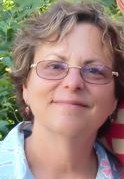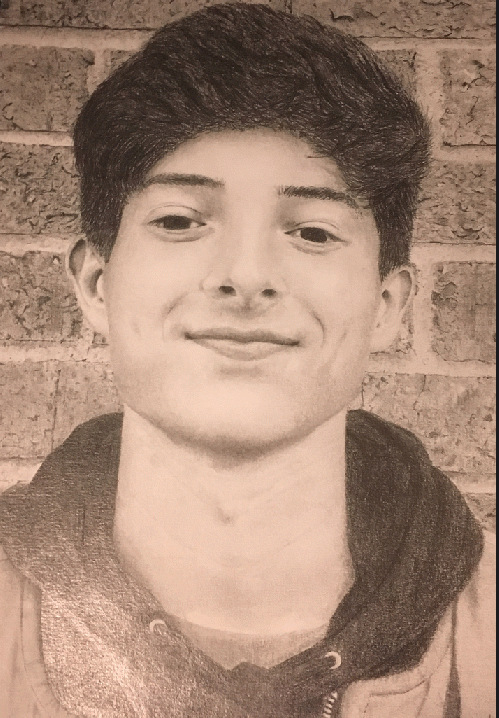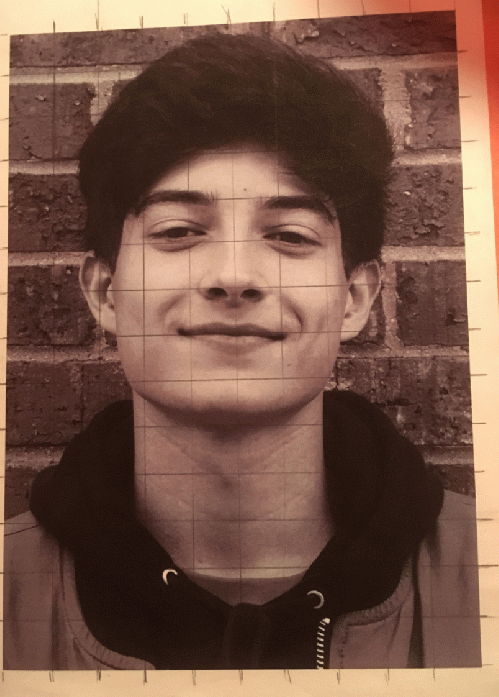My guest today is Jaxon Kawecki, a 15-year old high school sophomore in Madison, Wisconsin. Welcome to OpEdNews, Jaxon.
Joan Brunwasser: I was at the home of friends of mine and saw what I thought was a very cool photograph of you, their grand-nephew. But that wasn't it at all, was it? What was I really looking at?
Jaxon Kawecki: Thanks for giving me the opportunity to speak to you.
No, it was not a photo you were looking at. It was a self portrait I drew with pencils for a project in my art class, based off of a black and white photo of myself taken by my art teacher.
JB: I was flabbergasted. I was positive it was a photograph, even after I was told that it wasn't. I couldn't stop looking at it.
If you don't mind, I'd like to spend some time looking at your self-portrait and have you discuss it with us. For instance, what were the art instructor's instructions?
JK: The project was to draw a self portrait, we had a lot of freedom in this project which taught me how to overcome certain things that were difficult. However, on this drawing we were instructed to draw it by isolating it into specific sections. It was done like this to learn to focus on small, intricate details by looking at the image in parts. For example, with the bricks in my drawing I had to pay close attention to the detail and the different textures throughout the drawing such as the hair, skin and jacket.
JB: When you say "looking at the image in parts", what do you mean exactly? How many parts? And how do you do it? It sounds conceptually very hard. Am I mistaken?
JK: Well, the technique used for this drawing was the grid technique where a 140 box grid is drawn over the reference photo and the drawing. This ensures that the proportions of everything are accurate and it also helps you focus on a single section of the drawing which helps with detail. It is very time consuming since we were instructed to draw each individual box one at a time. Now the challenging part of it all is to make sure everything looks grouped together and not individually drawn which meant going back over the whole drawing several times to make everything look smoothly connected.
JB: That sounds much more complicated and compartmentalized than sitting down and waiting for inspiration. Yet, clearly it worked. Are you pleased with the end product?
JK: I am really satisfied with the end results of this piece and I believe it is probably the best of all my work so far. This drawing turned out much better than I'd expected and I'm proud of how it turned out and I think it shows my growth as an artist.
JB: Even though this piece lacks color (or maybe because of it), it has tremendous depth and texture. Have you worked a lot with pencils besides for this project? Is it a particularly satisfying or challenging medium to work with?
JK: Yes, pencils is my most used medium, the medium I'm best at using and also my favorite medium to work with. I've been working pencils for a long time and while they only draw in black and white, I think it's still really cool to see what can be drawn with just pencils. There is something satisfying about working with pencils and just all the things that can be done with just them. I also like them because of how accessible they are opposed to paints or other mediums, with pencils you can draw anywhere.
JB: Is it hard or weird to work on a picture of yourself? Did it make you self-conscious or wonder "Do I really look like this?" And does the grid technique minimize that since you were only working on a small portion at a time?
(Note: You can view every article as one long page if you sign up as an Advocate Member, or higher).







